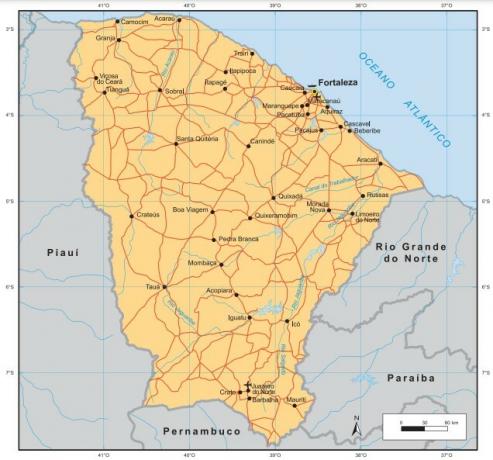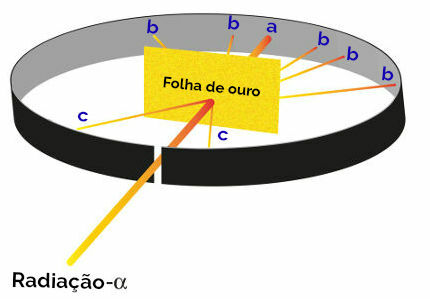In the English language, the past continuousdescribes actions and/or events that were in past progression, therefore, it is also called past progressive in some grammars|1||2|. There are other uses for this tense as well, for example when we have two actions and one is interrupted, or to emphasize certain actions in the past.
Read too: Irregular verbs – list of irregular verbs in english
Use of pastcontinuous
Progression in past continuous is a relevant aspect to understand its use, which differs from other verbal tenses in the past. Thus, it should be taken into account that the actions in the past continuous have a character of past temporal progress, refer to something we were in the middle of doing/conducting|1|. It can also be used to distinguish two past actions: one that was in full swing when another stopped it to take its place.
Also, we use this tense to emphasize actions that were taking place in the past. Finally, another possibility of using this time is related to repeated and temporary actions in the past. Take a look at some examples:
They were watching a film when the power went out.
(They were watching a movie when the power ran out.)My mom was working the whole night.
(My mother was working all night.)Last month, I was organizing our party.
(Last month, I was organizing our party.)
Now let's sort the examples according to the uses of past continuous. In the first example, we are faced with two actions. In the first prayer, the action was in progress when the energy ran out, interrupting what they were doing. In example 2, there is an emphasis or emphasis on the action that was taking place, that is, the fact that the mother had been working all night. The third example shows a temporary action in the past.
rules of pastcontinuous
for being a compound tense, it is formed by the auxiliary verb to beat the simple past + present participate of the main verb, this being the structure of affirmative clauses. Each of these verbs has a specific function. The verb to be indicates that it is a past tense, while the participle of the main verb acts on the aspectuality of actions that have a duration and are not punctual, as occurs in the simple past|2|. A negative sentence in this tense is formed by adding the not after the verb to be at the simple past. For interrogative clauses, just invert the main verb and the subject.
AFFIRMATIVE |
NEGATIVE |
INTERROGATIVE |
||||||
I |
was |
studying english (studying English). |
I |
she was not (was not) |
studying english (studying English). |
she was |
I |
studying english (studying English)? |
you |
were |
you |
weren’t |
were |
you |
|||
|
he she It |
was |
he she It |
she was not |
she was |
he she it |
|||
|
we you they |
were |
we you they |
weren’t (were not) |
|||||
were |
we you they |
When we have two actions in the past, one year past continuous and another in simple past, we must pay attention to the use of when (when) and from while (While). The first accompanies the prayers that are in the simple past, and the second accompanies the prayers that are in the past continuous|2|.
See the following examples:
I was reading a book when the door opened.
(I was reading a book when the door opened.)While he was sleeping, I made dinner.
(While he was sleeping, I made dinner.)
Taking into account the structural rules of the past continuous, just practice with some personal examples. Note the following as a model:
Were you having a party yesterday? No, we weren’t. We were studying until late for our test on Monday.
(Were you partying yesterday? No, we weren't. We were studying late for our test on Monday.)She wasn’t listening to music when the dog barked.
(She wasn't listening to music when the dog barked.)It was raining a lot yesterday morning, but I had so much to do that I couldn’t enjoy it.
(It was raining heavily yesterday morning, but I had so much to do that I couldn't enjoy it.)
Difference between pastperfectcontinuous and pastperfect
Normally, perfect English tenses have a connection with the present. However, the verb tenses past perfect and past perfect continuous have a close relationship with the past. The first deals with the relationship between two past actions, showing that one occurred before the other. The prayer that contains the past perfect is the one that occurred first. This tense is formed by the verb had + past participle|2|.
On the other hand, thepast perfect continuousalso expresses a relationship between two past actions, but its focus is on the duration/development of the past action itself. formed by the verb had + been + present participle (-ing)|2|.
She had been working. She was glad about it.
(She was working. She was happy about it.)She had worked. She looked glad about it.
(She had worked. She seemed happy about it.)
See that, in the example with the past perfect continuous (1), the focus is on the progression of the action. While in example 2, with the past perfect, the focus is on the result, by differentiating these two verb tenses.|1|
See too: Modal verbs – when and how to use?

solved exercises
Question 1 - (Colegio Naval 2017) Complete the sentences with the correct use of the Simple Past and the Past Continuous.
1- I was waiting for the bus when I___________ (see) her.
2- The children ___________ (argue) when the teacher arrived.
3- Everyone___________ (listen) to music when the lights ___________ (go) out.
To fill in the gaps respectively, mark the right option.
a) saw / was arguing / were listening / went
b) was seeing / was arguing / listened / were
c) were weeing / argued / listenned / were
d) saw / were arguing / was listening / went
e) was seing / argued / listened / were going
Resolution
Alternative D, as we have in sentence 1: past continuous and simple past. In sentence 2, we have: past continuous and simple past. In sentence 3: past continuous and simple past. In all three cases, the second prayer interrupts what was going on before.
Question 2 - (EEAR 2017) Write (T) is true and (F) is false according to the explanation of the tenses in parenthesis.
( ) When you are looking back from a point in past time, and you are concerned with the effects of something that happened at an earlier time in the past. (Past perfect)
( ) When you are concerned with the present effects of something which happened at an indefinite time in the past. (Past perfect continuous)
( ) When you are talking about something which continued to happen before and after a particular time. (Past continuous)
Choose the alternative that corresponds to the right order.
a) T - F - F
b) T - F - T
c) F - T - F
d) F - F - T
Resolution
Alternative B, because the second statement is the definition of the tense gift perfect.
Grades
|1| EASTWOOD, J. Oxford guide to English grammar. Oxford University Press: Oxford, 2002.
|2| DECAPUA, A.. grammar for teachers: a guide to American English for native and non-native speakers. Springer: New York, 2008.
By Patricia Veronica Moreira
English teacher
Source: Brazil School - https://brasilescola.uol.com.br/ingles/past-continuous.htm


